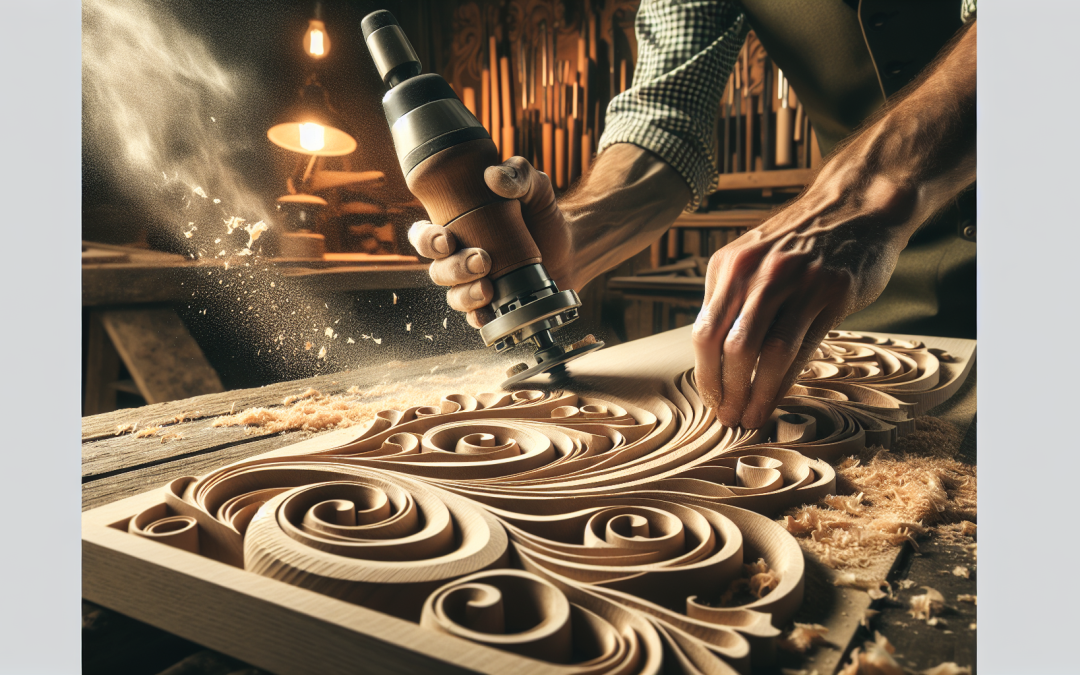Moving forth in your woodworking journey, you’ve undoubtedly mastered a range of essential tools, from saws to chisels, all of which are important for learning foundational woodworking skills. But let’s switch gears here and focus on what’s often overlooked but has the potential to create intricate and unique patterns in your woodworking projects – the router. Router techniques are sophisticated, artistic, and can add an unbeatable flair to any piece you’re working on.
A router can cut, trim, and shape wood in a way that otherwise would be extremely challenging and time-consuming. The key to uncovering the router’s full potential lies in understanding the myriad of techniques it’s capable of. So, let’s dive in and explore these techniques.
The Art of Sign Carving with a Router
Creating custom signs or engravings with routers adds a personal touch to any woodworking project. Delving into wood carving you can carve out any design you can think of using a router. To start, select flat stock wood and sketch your design lightly with a pencil. Using a compact router with a detailed bit, slowly follow the pattern’s outline. Remember, patience is key in carving to avoid any potential splits or chips in the wood.
While sign carving is fascinating, it demands precision and practice. To refine the task, you must choose the right bits and ensure that your router settings are accurate. This skill-building exercise is accelerating in popularity the world over, thanks to accessible tutorials and guides.
Picture Perfect Dadoes and Grooves
Dadoes and grooves are fundamental joints in woodworking but can often seem complex. However, the router makes short work of these joints with finesse. A straight bit and a reliable fence can be the perfect combination for flawless grooves. For a dado, a templating bit should suffice. The trick is all in the motion – a smooth, uninterrupted path ensures a groove or dado with a consistent depth and immaculate sides.
With a router, the quality of joinery methods like dovetails and mortise-and-tenon is unmatched. To master these techniques and avoid common mistakes, it all comes down to practice and refining your techniques.
Elegant Edge Profiles
Have you ever admired the intricate edges of ornate furniture pieces? Chances are, a router played a big role in creating those edges. With so many varieties of router bits available, the sky’s the limit when it comes to forming profiles on the edges of your workpieces.
Edge profiles define the final look of your masterpiece. From a smooth, rounded corner for a modern feel, to a beveled edge for a rustic look, or a traditional Roman Ogee detail for a touch of class, routers create a style statement.
Precision Inlays
Woodworking reaches the epitome of artistry with inlays. Using a router allows you to create custom inlays that elevate the aesthetic of any woodworking project.
From creating a precise recess to inserting a matching piece, routers handle inlays with ease. This highlights the fine details and lends your work a professional look. Whether it’s a simple geometric shape or a complex pattern, wood carving your inlays with a router can be a rewarding experience.
Router-Made Joinery
Exploring traditional joinery methods like dovetails and mortise-and-tenon, consider that these joints are not just strong but also aesthetically pleasing. With the correct bits and jigs, a router can create these joints easily and accurately.
Break down classic joinery methods with a router for their strengths, uses, and understanding the fundamentals of executing them effectively.
In summary, a router is a versatile tool, enabling not just utility but also intricate designs and carvings. Unlock your full potential with router techniques and transform your woodworking projects from ordinary to extraordinary.

